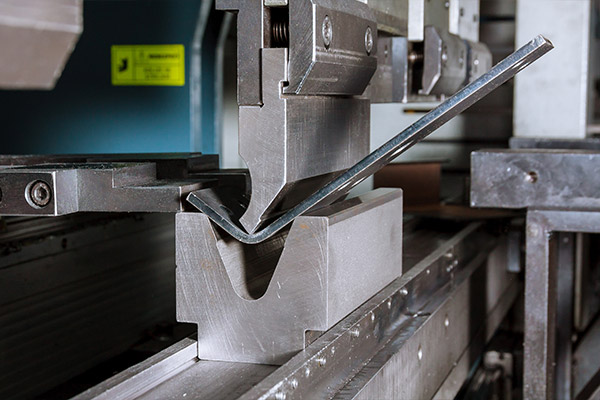Welcome to My Blog! 🌟
Before we dive into the content, I’d love for you to join me on my social media platforms. It’s where I share more insights, engage with our vibrant community, and post regular updates. Here’s how you can stay connected:
📘 Facebook: Connect with me on Facebook
Now, let’s embark on this journey together. I hope you find the content here insightful, engaging, and most importantly, valuable. Let’s explore, learn, and grow together! 🚀
Table of Contents
Introduction

When it comes to crafting precision cutting tools, the type of steel used can make or break a blade’s performance. One of the most respected choices among blade makers, industrial manufacturers, and hobbyists alike is O1 steel for knives. This high-performance oil-hardening tool steel is known for its durability, edge retention, wear resistance, and ease of heat treatment.
In this comprehensive guide, we delve into the essential qualities of O1 steel for knives, its chemical and mechanical properties, and the many reasons why it continues to be a top choice for blade applications across various industries.
What is O1 Steel for Knives?
O1 steel, also known by its German designation 1.2510, is a cold work tool steel made from a balanced composition of carbon, chromium, manganese, vanadium, and tungsten. It is categorized as an oil-hardening steel, meaning it must be quenched in oil during the heat treatment process.
What makes O1 steel for knives exceptional is its versatility. It combines hardness and toughness with the ability to hold a razor-sharp edge, making it suitable for professional and custom blades used in everything from industrial cutting to gourmet kitchens.
Chemical and Mechanical Properties of O1 Steel
The unique properties of O1 steel for knives can be attributed to its well-balanced composition and robust mechanical characteristics. Here’s a detailed look at its composition:
Chemical Composition and Mechanical Properties Table
| Property | O1 (Range) | 1.2510 (Range) |
|---|---|---|
| Carbon (C) | 0.85 – 1.00% | 0.90 – 1.05% |
| Silicon (Si) | 1.00 – 1.40% | 1.00 – 1.20% |
| Manganese (Mn) | ≤ 0.03% | ≤ 0.03% |
| Sulfur (S) | ≤ 0.03% | ≤ 0.03% |
| Phosphorus (P) | 0.10 – 0.50% | 0.05 – 0.35% |
| Chromium (Cr) | 0.40 – 0.70% | 0.50 – 0.70% |
| Vanadium (V) | ≤ 0.30% | 0.05 – 0.15% |
| Tungsten (W) | 0.40 – 0.60% | 0.50 – 0.70% |
| Mechanical Property | Value |
| Tensile Strength | ≥153 MPa |
| Yield Strength | ≥982 MPa |
| Elongation | 41% |
| Reduction of Area | 42% |
| Charpy Impact | 22 J |
These properties make O1 steel for knives a reliable and durable option, capable of performing under stress and maintaining a sharp edge.
Applications of O1 Steel in Knife Making

Industrial Cutting Tools
In industrial settings where continuous use and performance consistency are essential, o1 steel for knives proves to be a workhorse material. This steel is frequently chosen for crafting industrial blades used in cutting metal sheets, plastic film, paper rolls, and rubber components. Its hardness enables long-term edge retention, while the microstructure—enriched with chromium and tungsten—adds wear resistance, even in abrasive environments.
Whether it’s shear blades in metal stamping plants or die-cutting tools in packaging facilities, professionals rely on o1 steel for knives to reduce downtime and extend replacement intervals. It’s especially advantageous in production lines that demand repeatable cuts and dimensional accuracy.
Food Processing and Kitchen Knives
In the food processing industry, hygiene and performance go hand in hand. O1 steel for knives has become popular among knife manufacturers serving industrial kitchens and meat-processing plants due to its balance of hardness and ease of maintenance. Although not stainless, its fine grain structure allows it to be honed to a very fine edge—perfect for slicing meat, fish, and fibrous vegetables like cabbage or celery root with minimal drag.
For high-volume food production environments where workers slice, dice, or trim for hours each day, o1 steel for knives delivers an efficient and reliable edge. These knives can be sharpened repeatedly without compromising blade integrity, making them a cost-effective and high-performance option.
Woodworking Tools
O1 steel’s edge stability and wear resistance make it a superior choice for woodworking applications. Tools such as chisels, carving blades, draw knives, plane irons, and router bits crafted from o1 steel for knives can maintain a keen edge even when used on hardwoods like oak, maple, or walnut.
Woodworkers often favor O1 steel because it can be re-sharpened easily using standard honing stones, unlike some high-speed steels that require specialized equipment. Its heat treatment response also allows custom blade makers to fine-tune hardness levels based on specific woodworking tasks—softer edges for chisels used on green wood, or harder ones for carving dry, dense stock.
Hobby and Custom Knife Making
For independent knife makers, artisan blacksmiths, and hobbyists, o1 steel for knives represents the ideal starting point. It is readily available in flat bar and round stock, and its workability with common machining tools makes it attractive for small-scale workshops.
O1 steel can be heat-treated in relatively simple setups, making it accessible to those without industrial furnaces. Many creators use it for crafting hunting knives, bushcraft blades, and kitchen knives, as it allows for controlled experimentation with edge geometry and tempering techniques.
Additionally, the consistent grain structure and polishability of o1 steel for knives make it aesthetically pleasing for handmade pieces—allowing blade makers to craft not only functional but also beautiful products.
Automotive and Aerospace Components
Though primarily known for cutting applications, o1 steel for knives is also found in precision tooling within the automotive and aerospace sectors. It is used to manufacture small but critical components such as forming dies, trim tools, shaft guides, and gauge blocks. These parts demand materials with high dimensional stability and excellent resistance to abrasive wear—qualities that O1 steel inherently offers.
In aircraft and automotive production environments, where consistent performance under thermal or mechanical stress is vital, o1 steel for knives provides the ideal combination of strength and stability. Its resistance to deformation during use ensures consistent tolerances in tightly calibrated systems.
Advantages of Using O1 Steel for Knives
- Excellent Wear Resistance: The steel’s hard carbide particles resist abrasion during use.
- Good Edge Retention: Maintains sharpness over time with minimal re-sharpening.
- Toughness: Can endure impacts and mechanical stress without chipping.
- Ease of Heat Treatment: Offers flexibility in achieving desired hardness levels.
- Dimensional Stability: Minimizes warping or distortion during hardening.
Real-World Testimonials on O1 Steel Performance

“Excellent Wear Resistance”
Our cutting tools crafted from O1 steel for knives have consistently demonstrated superior wear resistance compared to the materials we previously used. This improvement has translated directly into longer tool lifespans and greater operational consistency. In high-volume manufacturing environments, this means fewer interruptions for blade replacements or maintenance, resulting in increased productivity and lower overall costs. The steel’s ability to withstand abrasive wear under continuous heavy use has truly been a game-changer for our operations.
“Good Edge Retention”
In both food-grade processing and woodworking applications, the edge retention of O1 steel for knives has proven to be exceptional. Our blades remain sharp for significantly longer periods, dramatically reducing downtime associated with frequent sharpening or blade changes. This quality has been crucial for maintaining efficiency in busy kitchens and production lines, where a dull blade can slow down workflow and compromise the quality of cuts. The reliable sharpness of O1 steel knives also contributes to safer handling and more precise work.
“High Durability”
Tools made from O1 steel for knives have shown remarkable durability, withstanding repeated heavy-duty use without any noticeable degradation in performance. This toughness has been especially beneficial in our high-volume stamping operations, where tools are subjected to constant mechanical stress and impact. The steel’s resilience means that our punches and dies last longer and maintain their dimensional accuracy, reducing both downtime and the costs associated with frequent tool replacement or repair. This durability makes O1 steel a trusted material for demanding industrial applications.
Conclusion
O1 steel for knives remains a gold standard among tool steels due to its excellent balance of hardness, toughness, and edge-holding ability. Its versatility makes it ideal for everything from industrial blades and woodworking tools to culinary and hobbyist knives.
Whether you’re an experienced blade smith or an industrial tool manufacturer, O1 steel offers the performance and reliability needed in high-stress, precision applications. With its long track record of success, O1 steel for knives continues to stand out as one of the most dependable materials in the world of cutting tools.
FAQ
Is O1 steel stainless?
No, O1 steel is not stainless. It has a high carbon content, which makes it more susceptible to rust if not properly maintained.
How hard can O1 steel get?
With proper heat treatment, O1 steel for knives can reach a hardness of up to 63 HRC.
Can O1 steel be used for kitchen knives?
Yes, but regular cleaning and oiling are recommended to prevent rust. Its edge retention makes it a great choice for kitchen blades.
Is O1 easy to sharpen?
Yes, O1 steel sharpens relatively easily compared to many other high-carbon tool steels.
What is the best heat treatment process for O1 steel?
The steel should be preheated, then austenitized at 1450-1500°F, followed by an oil quench and tempering.

